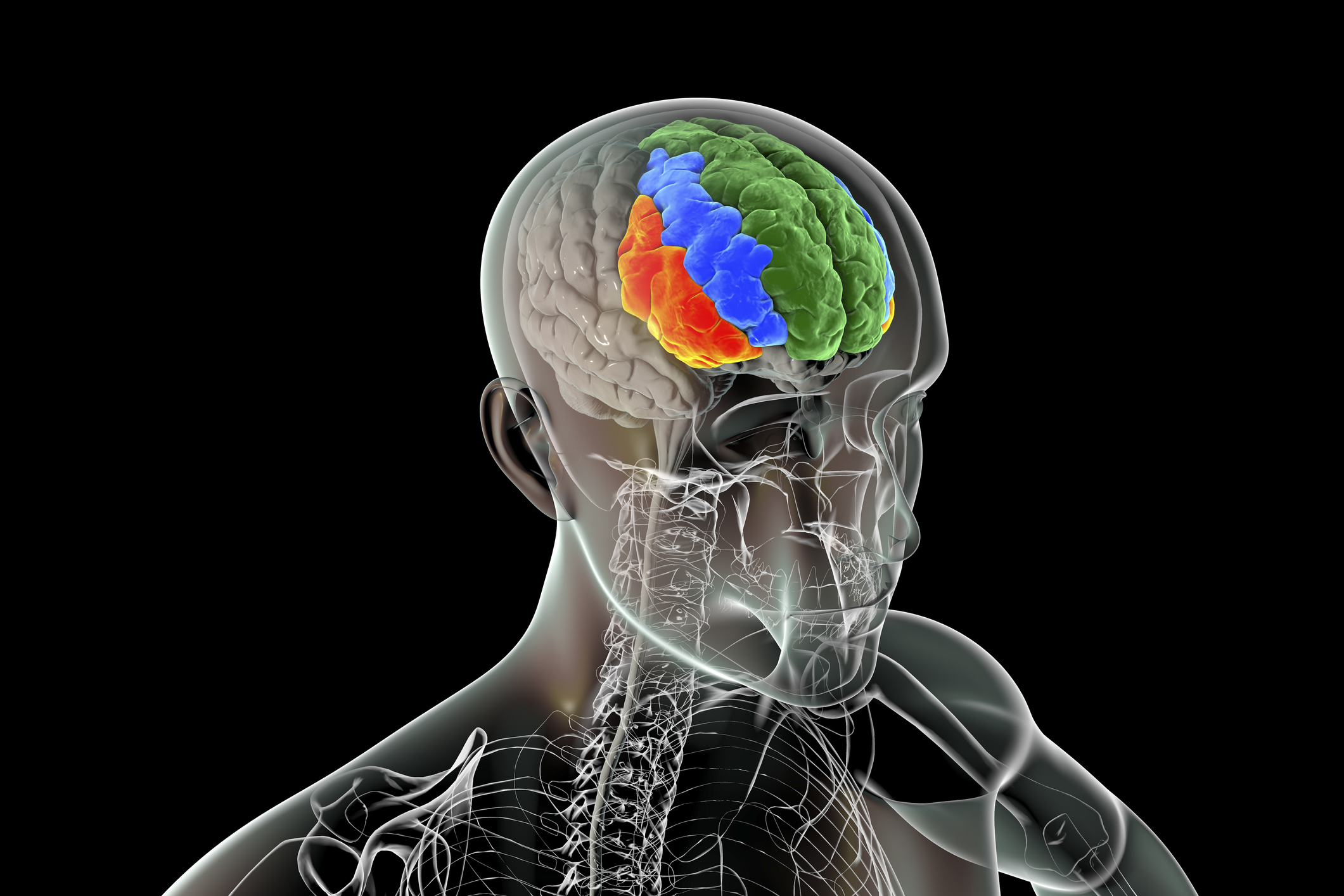What do you think of this article?
By Dr. David Woo - March 25, 2022

Research links depression to a certain region of the brain, called the prefrontal cortex.(1,2) A new depression treatment, called transcranial magnetic stimulation (also referred to as TMS) works by stimulating the prefrontal cortex to relieve depression symptoms. To understand how TMS works as a treatment for depression, it first helps to know what the prefrontal cortex does.
The Function of the Prefrontal Cortex
The prefrontal cortex is a region of the brain that makes up more than 12 percent of the brain’s volume and is involved in many vital, complex processes.(3,4) Many of the prefrontal cortex’s functions fall under the category of “executive functioning.”
Executive functions allow people to make higher-level decisions, weighing available information and responding to their environment in order to control their behavior. The prefrontal lobe allows you to understand the relationship between actions and consequences. Instead of behaving in an impulsive, short-sighted way, you can choose to do what you know is in your best interest.
The prefrontal cortex also plays a significant role in personality development. It helps you solidify your goals and values, allowing you to act consistently in ways that reflect them.
The Prefrontal Cortex’s Role in Depression
The prefrontal cortex is one of the regions most consistently impacted by depression.(2) Therefore, restoring healthy prefrontal cortex function, including through transcranial magnetic stimulation, may be key to reversing symptoms of depression.(5)
One key to understanding the prefrontal cortex’s role in depression is to monitor brain activity in that region. Individuals who experience depression often have reduced brain activity in the prefrontal cortex. The level of inactivity is usually consistent with the severity of the depression.(6)
Consider again the role of the prefrontal cortex in setting goals and making decisions. This function can be broken further into its left and right sides. The left prefrontal cortex helps establish positive feelings, including the rewards of certain behaviors and actions, while the right prefrontal cortex is more responsible for negative, inhibiting feelings, including potential consequences. In healthy patients, the activity on both sides is balanced. People are able both to set goals and to use necessary caution when pursuing them.
In cases of depression, inactivity is often especially pronounced in the left dorsolateral prefrontal cortex, while the right dorsolateral prefrontal cortex may also be too active.(7) As a result, depressed patients have difficulty believing that goals are achievable or will result in desired rewards. When weighing decisions, the downsides and drawbacks seem more likely than the possible benefits or advantages. Symptoms of depression, such as lack of motivation or a sense that nothing is worth doing, may be traced directly to problems with the prefrontal cortex.
How TMS Targets the Prefrontal Cortex to Treat Depression
Transcranial magnetic stimulation (TMS) is a non-invasive treatment for depression that targets the prefrontal cortex. It’s an effective alternative for patients who may not respond to other forms of treatment, including antidepressant medication. TMS uses gentle, targeted stimulation in the form of magnetic pulses to restore balanced brain activity.
TMS generally targets the left side of the dorsolateral prefrontal cortex, which is connected to other parts of the brain affected by depression.(8) The goal of TMS treatments is to restore activity in the dorsolateral prefrontal cortex to a regular level. In cases where the right side of the dorsolateral prefrontal cortex is too active, it’s also possible to send lower frequency pulses to reduce activity in that area.
Your doctor at Madison Avenue TMS & Psychiatry can help you understand if TMS is right for you. If you would like to make an appointment to see if you are a candidate for TMS, contact us online or call (212) 731-2033.
Resources:
1. Buchheim A, Viviani R, Kessler H, Kächele H, Cierpka M, Roth G, George C, Kernberg OF, Bruns G, Taubner S. Changes in prefrontal-limbic function in major depression after 15 months of long-term psychotherapy. PLoS One. 2012; 7(3):e33745. Link. Accessed March 8, 2022.
2. Pizzagalli, D.A., Roberts, A.C. Prefrontal cortex and depression. Neuropsychopharmacol. 2022; 47:225–246. Link. Accessed March 1, 2022.
3. McBride T, Arnold SE, Gur RC. A comparative volumetric analysis of the prefrontal cortex in human and baboon MRI. Brain Behav Evol. 1999 Sep;54(3):159-66. Link. Accessed March 15, 2022.
4. Funahashi S, Andreau JM. Prefrontal cortex and neural mechanisms of executive function. J Physiol Paris. 2013 Dec;107(6):471-82. Link. Accessed March 15, 2022.
5. Hare, B.D., Duman, R.S. Prefrontal cortex circuits in depression and anxiety: contribution of discrete neuronal populations and target regions. Mol Psychiatry. 2020; 25:2742–2758. Link. Accessed March 4, 2022.
6. Pandya M, Altinay M, Malone DA Jr, Anand A. Where in the brain is depression?. Curr Psychiatry Rep. 2012;14(6):634-642. Link. Accessed March 4, 2022.
7. Dai L, Zhou H, Xu X, Zuo Z. Brain structural and functional changes in patients with major depressive disorder: a literature review. PeerJ. 2019; 7:e8170. Link. Accessed March 4, 2022.8. Lan MJ, Chhetry BT, Liston C, Mann JJ, Dubin M. Transcranial Magnetic Stimulation of Left Dorsolateral Prefrontal Cortex Induces Brain Morphological Changes in Regions Associated with a Treatment Resistant Major Depressive Episode: An Exploratory Analysis. Brain Stimul. 2016; 9(4):577-583. Link. Accessed March 4, 2022.
Dr. David Woo is the owner and head clinical psychiatrist at Madison Avenue TMS and Therapy in New York City. Dr. Woo has been seeing patients in private practice since 2002, always with the goals of combining evidence-based medicine with psychodynamic psychotherapy and collaborating with other mental health professionals to ensure the best possible outcomes for his patients. He has been certified to administer TMS at his practice since 2017. His greatest clinical interests include helping patients suffering from depression, anxiety, and obsessive compulsive disorder.
Follow Dr. Woo On









